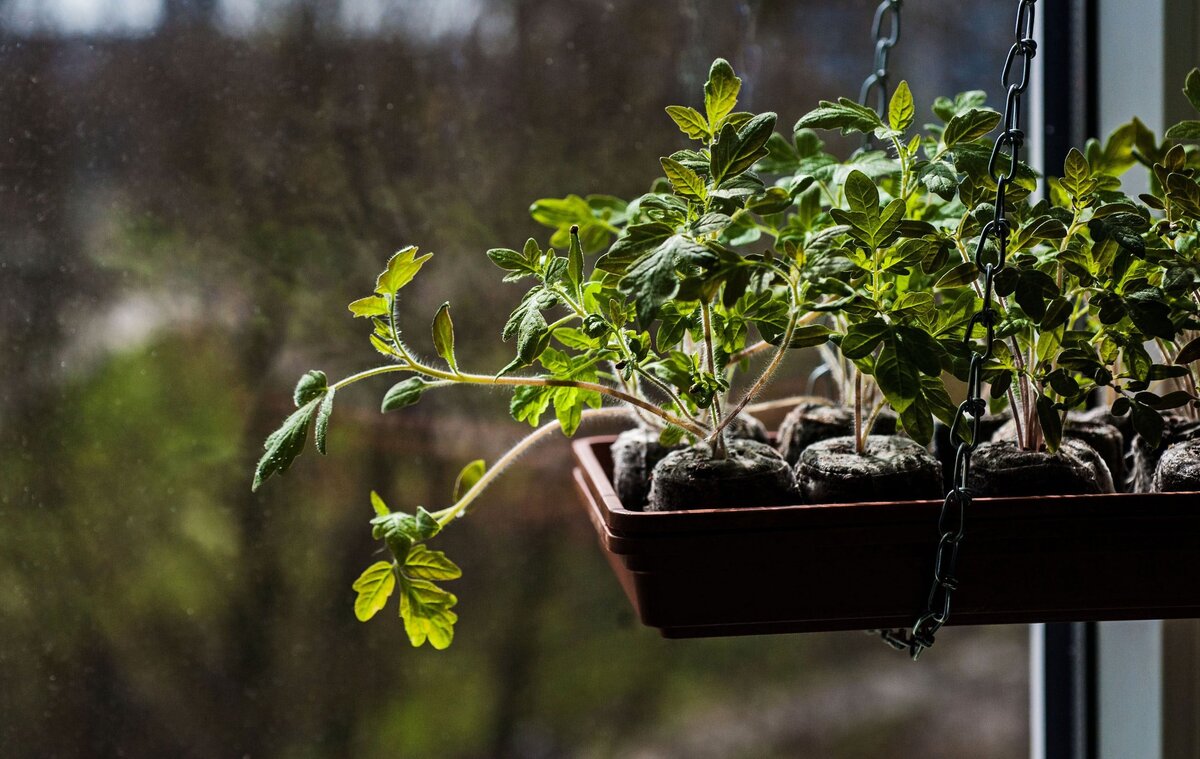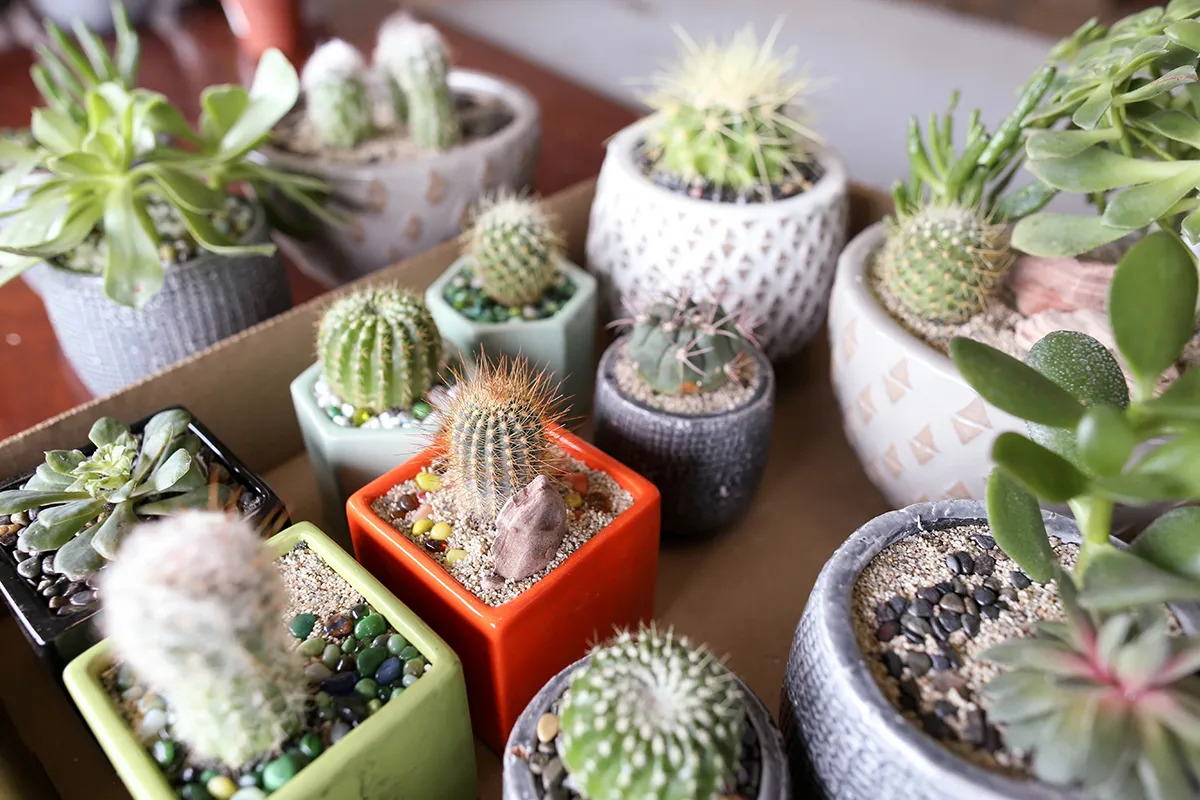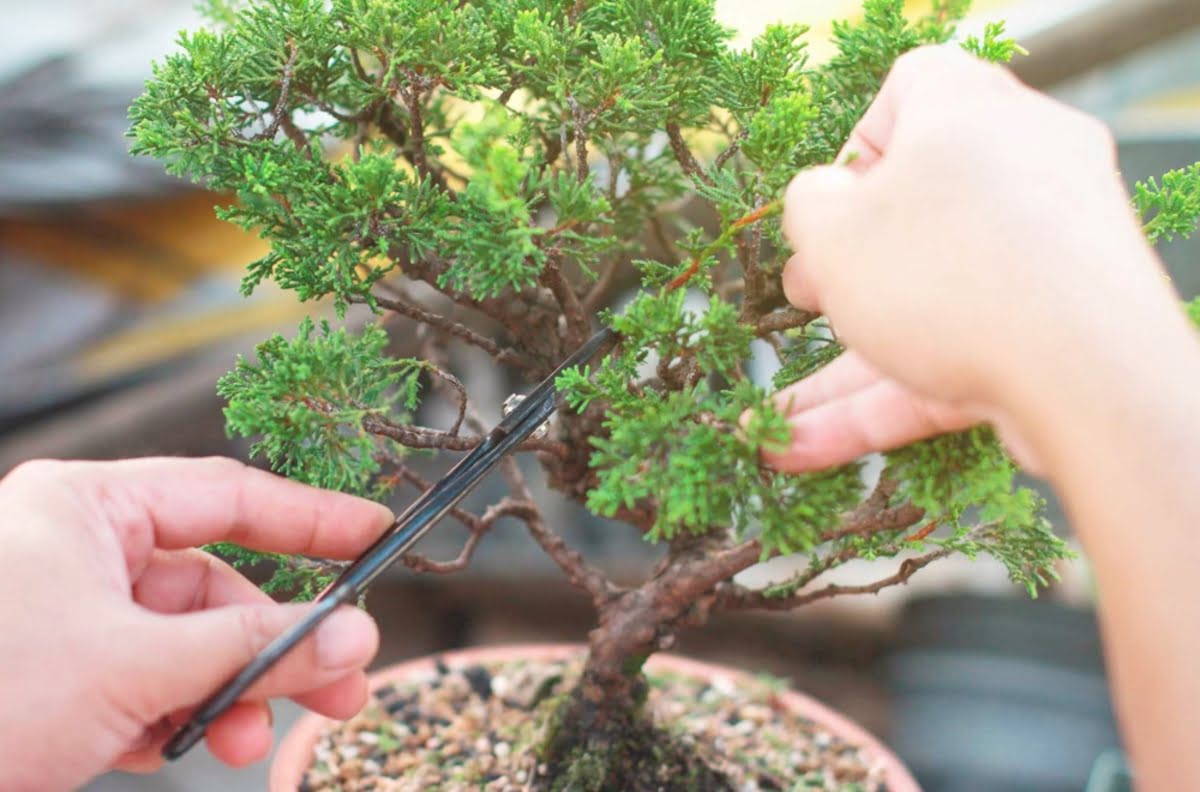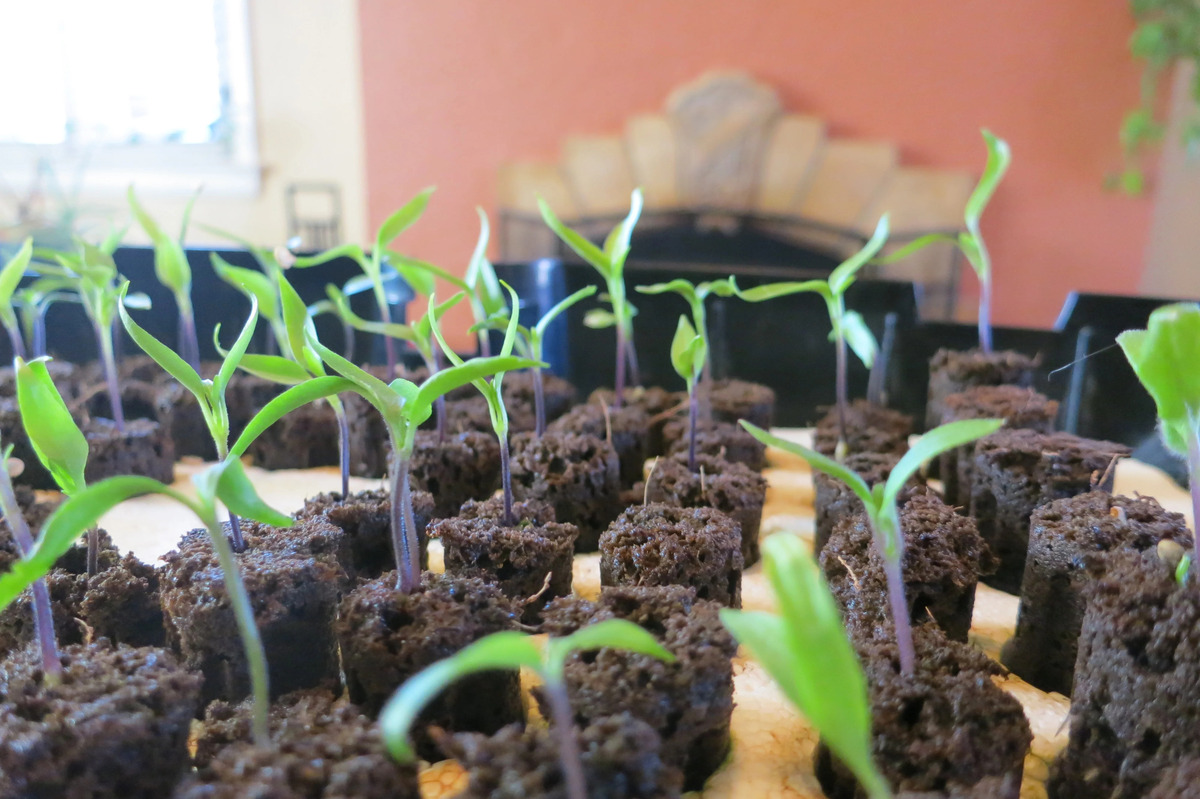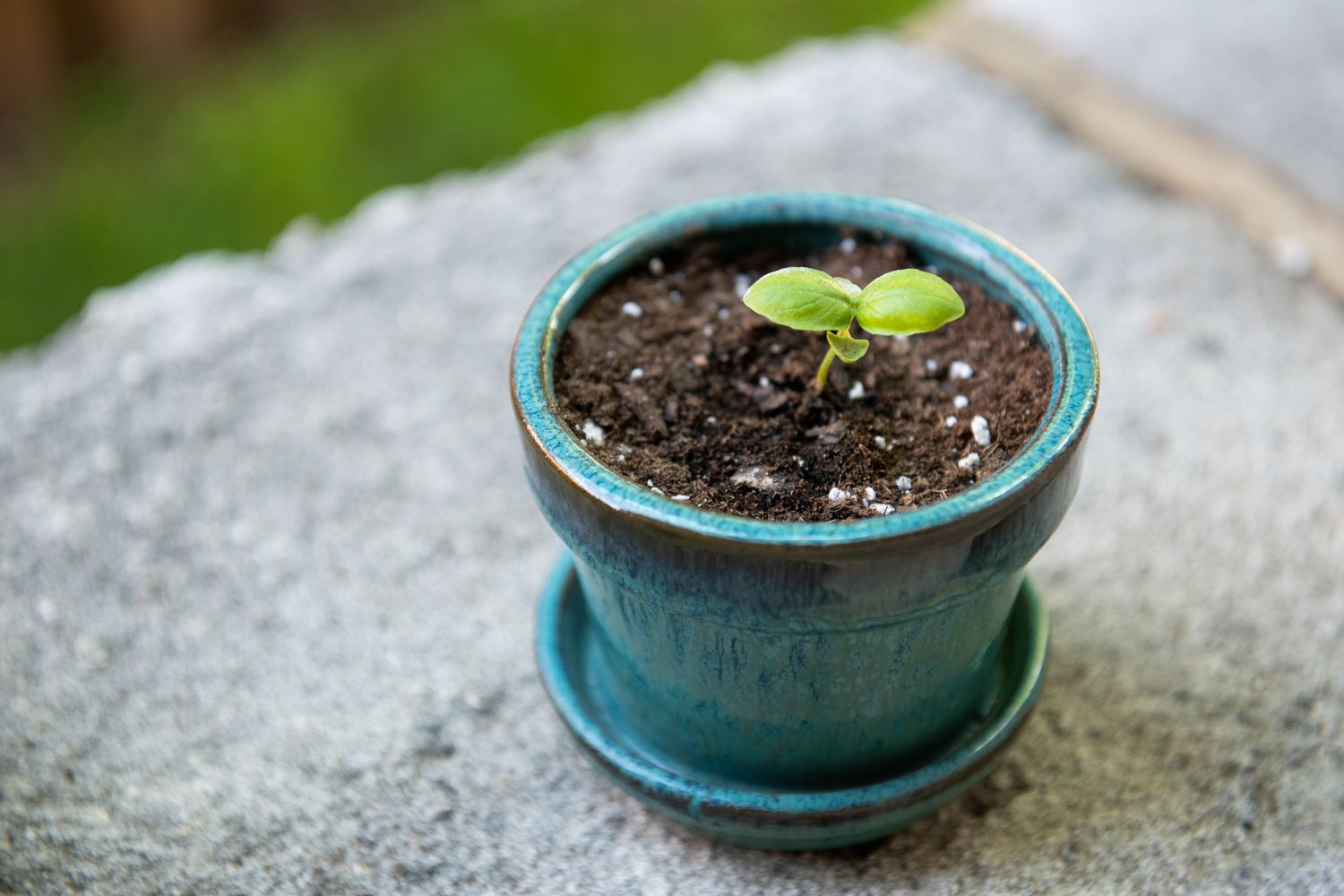Home>Types of Gardening>Ornamental Gardening>When To Repot Bonsai Seedlings


Ornamental Gardening
When To Repot Bonsai Seedlings
Published: December 31, 2023
Learn when to repot bonsai seedlings for optimal growth and health in your ornamental gardening endeavors. Expert tips and advice for successful bonsai care.
(Many of the links in this article redirect to a specific reviewed product. Your purchase of these products through affiliate links helps to generate commission for Chicagolandgardening.com, at no extra cost. Learn more)
Table of Contents
Introduction
Welcome to the enchanting world of bonsai gardening! Cultivating bonsai seedlings is a deeply rewarding endeavor that requires patience, dedication, and a profound understanding of the delicate art of nurturing these miniature trees. As an ornamental gardening enthusiast, you are undoubtedly aware of the meticulous care and attention that these tiny living masterpieces demand. One crucial aspect of bonsai cultivation is knowing when and how to repot your bonsai seedlings to ensure their continued health and vitality.
In this comprehensive guide, we will delve into the intricacies of repotting bonsai seedlings, exploring the optimal timing for this essential task and providing you with a step-by-step roadmap to successfully repotting your cherished bonsai. Whether you are a seasoned bonsai aficionado or a novice gardener eager to embark on this captivating journey, understanding the nuances of repotting bonsai seedlings is pivotal in nurturing these miniature marvels to their fullest potential.
Throughout this article, we will uncover the signs that indicate your bonsai seedling is in need of repotting, pinpoint the best time to undertake this process, and equip you with invaluable aftercare tips to ensure the well-being of your repotted bonsai seedlings. By the time you reach the end of this guide, you will possess a wealth of knowledge that will empower you to nurture your bonsai seedlings with confidence and expertise.
So, let's embark on this enlightening exploration of when to repot bonsai seedlings, unraveling the secrets of fostering these captivating living artworks with the care and attention they truly deserve.
Understanding the Growth Cycle of Bonsai Seedlings
Before delving into the intricacies of repotting bonsai seedlings, it is imperative to grasp the fundamental aspects of their growth cycle. Bonsai seedlings, like their full-sized counterparts, undergo a continuous cycle of growth, dormancy, and renewal. Understanding this cycle is essential in determining the optimal timing for repotting, as it directly impacts the health and vigor of the miniature trees.
Upon germination, bonsai seedlings embark on a journey of growth, characterized by the development of their delicate roots, stems, and leaves. During this phase, the seedlings are particularly vulnerable and require meticulous care to ensure their healthy progression. As they mature, the roots gradually fill the available space within the container, signaling the need for a larger and more accommodating environment to sustain their growth.
Following this initial phase, bonsai seedlings enter a period of dormancy, where their growth rate slows, and they conserve energy to prepare for the next growth spurt. This dormancy phase is a natural part of the bonsai lifecycle and is essential for the overall well-being of the plants. It is during this phase that the seedlings may exhibit signs indicating the necessity for repotting, such as overcrowded roots or depleted soil nutrients.
As the dormant phase draws to a close, the bonsai seedlings reawaken, signaling the onset of renewed growth and vitality. This period of rejuvenation is a crucial juncture for assessing the need for repotting, as the seedlings prepare to resume their active growth cycle. By recognizing the subtle cues of this growth cycle, you will be better equipped to identify the opportune moment for repotting your bonsai seedlings, ensuring that they continue to thrive and flourish.
Signs That Your Bonsai Seedling Needs Repotting
Recognizing the signs that indicate your bonsai seedling requires repotting is a crucial skill for any dedicated gardener. By observing the subtle cues and understanding the needs of your miniature trees, you can intervene at the opportune moment to ensure their continued health and vitality. Here are the key indicators that it may be time to repot your bonsai seedling:
- Root Bound Condition: One of the most evident signs that your bonsai seedling needs repotting is the presence of a root-bound condition. This occurs when the roots become densely entwined and congested within the container, restricting further growth and impeding the absorption of essential nutrients and water. You may notice the roots circling the bottom of the pot or protruding from the drainage holes, signaling the urgent need for a more spacious environment.
- Depleted Soil: Over time, the soil in which your bonsai seedling is planted can become depleted of vital nutrients, hindering the plant’s growth and overall health. If you observe that the soil has become compacted, drains poorly, or fails to retain adequate moisture, it may be a clear indication that repotting is necessary to replenish the soil and provide a fresh, nutrient-rich growing medium for the seedling.
- Stunted Growth: When a bonsai seedling’s growth becomes visibly stunted, despite adequate care and favorable growing conditions, it may be a sign that the roots have outgrown the current container and are struggling to sustain the plant’s development. If you notice a significant slowdown in growth or the emergence of smaller, less vibrant leaves, it could be an indication that repotting is essential to facilitate the seedling’s continued expansion.
- Waterlogged Soil: Excessively waterlogged soil, indicated by persistent water pooling on the surface or slow drainage, can signify that the current container is no longer conducive to healthy root development. This waterlogged condition can lead to root rot and other detrimental effects on the bonsai seedling’s well-being, necessitating prompt repotting to rectify the issue and restore optimal growing conditions.
By remaining attentive to these telltale signs, you can proactively assess the condition of your bonsai seedlings and intervene with timely repotting when necessary, fostering their continued growth and resilience.
Best Time to Repot Bonsai Seedlings
Timing plays a pivotal role in the successful repotting of bonsai seedlings, influencing their ability to adapt to a new growing environment and thrive following the transplant. Understanding the optimal time to undertake this critical task is essential for ensuring the well-being of your miniature trees. Several key factors contribute to determining the best time to repot bonsai seedlings:
- Early Spring: The early spring season, just before the onset of vigorous growth, is widely regarded as the ideal time to repot bonsai seedlings. During this period, the seedlings are poised to enter a phase of renewed growth, making it opportune to transplant them into fresh soil and larger containers. Repotting at this time allows the seedlings to acclimate to their new environment and establish a robust root system before the peak growing season, setting the stage for robust and vigorous growth.
- Post-Dormancy: Repotting bonsai seedlings after their dormant phase, typically in early spring or late winter, capitalizes on the natural rhythm of their growth cycle. As the seedlings emerge from dormancy and prepare for renewed growth, they are primed to adapt to a new container and fresh growing medium, fostering their resilience and vitality. This post-dormancy period offers an optimal window for repotting, providing the seedlings with ample time to recover and thrive throughout the upcoming growing season.
- Pre-Flowering: For bonsai species that exhibit flowering or budding tendencies, repotting just before the onset of flowering can be advantageous. By repotting the seedlings before they enter the flowering phase, you can minimize the disruption to their blooming cycle and promote robust flowering in the subsequent season. This strategic timing allows the seedlings to focus their energy on root establishment and foliage development, laying the groundwork for a spectacular display of blooms in the following growing season.
By aligning the repotting process with these optimal timeframes, you can maximize the likelihood of a successful transition for your bonsai seedlings, setting them on a path to thrive and flourish in their rejuvenated growing environment.
Step-by-Step Guide to Repotting Bonsai Seedlings
Embarking on the repotting journey for your bonsai seedlings requires a methodical approach and careful attention to detail to ensure a smooth transition and minimal stress on the delicate plants. Here is a comprehensive step-by-step guide to repotting your bonsai seedlings with precision and finesse:
- Assess the Timing: Evaluate the growth stage and overall health of your bonsai seedlings to determine the optimal time for repotting, considering factors such as the growth cycle, dormancy phase, and upcoming growing season.
- Prepare the New Container: Select a suitable container that provides ample space for the seedling’s roots to grow and develop. Ensure that the container has sufficient drainage holes to prevent waterlogging and promote healthy root aeration.
- Prune the Roots: Carefully remove the seedling from its current container and gently prune the roots to encourage new growth and prevent overcrowding in the new container. Trim any excessively long or tangled roots while preserving the healthy root structure.
- Refresh the Soil: Prepare a well-draining, nutrient-rich soil mixture suitable for the specific needs of your bonsai species. Remove the old soil from the roots, ensuring thorough cleaning and untangling of the root system, and introduce the seedling to the fresh soil in the new container.
- Position the Seedling: Carefully position the seedling in the center of the new container, ensuring that the roots are evenly spread and gently compact the soil around the base of the plant to provide stability and support.
- Water and Settle: After repotting, water the seedling thoroughly to facilitate the settling of the new soil and promote root establishment. Ensure that excess water drains freely from the container, and place the repotted seedling in a suitable environment with adequate light and optimal growing conditions.
- Monitor and Nurture: Monitor the repotted bonsai seedling closely in the days and weeks following the repotting process, providing attentive care, appropriate watering, and a conducive growing environment to support its transition and encourage new growth.
By meticulously following these steps and exercising patience and care throughout the repotting process, you can empower your bonsai seedlings to thrive in their rejuvenated home, setting the stage for a flourishing and resilient future.
Aftercare Tips for Repotted Bonsai Seedlings
Following the meticulous repotting of your bonsai seedlings, providing attentive aftercare is paramount to ensure their seamless adaptation to the new growing environment and promote robust, sustained growth. Implementing the following aftercare tips will nurture your repotted bonsai seedlings and fortify their resilience:
- Optimal Watering: Strike a delicate balance in watering your repotted bonsai seedlings, ensuring that the soil remains consistently moist but not waterlogged. Monitor the moisture levels closely, adjusting your watering regimen to accommodate the seedlings’ evolving needs as they acclimate to their new container and soil.
- Gradual Sun Exposure: Gradually introduce the repotted bonsai seedlings to sunlight, shielding them from intense exposure initially and gradually increasing their access to natural light. This gradual transition minimizes the risk of sunburn and shock, allowing the seedlings to adapt and thrive in their rejuvenated setting.
- Protective Environment: Shield the repotted bonsai seedlings from harsh environmental conditions, such as strong winds, extreme temperatures, and inclement weather, to alleviate stress on the plants as they establish themselves in their new container.
- Fertilization Strategy: Implement a balanced fertilization regimen tailored to the specific needs of your bonsai species, providing essential nutrients to support the seedlings’ recovery and promote healthy, vigorous growth following the repotting process.
- Pruning and Training: Exercise caution in pruning and training the repotted bonsai seedlings, allowing them time to recover and acclimate before engaging in extensive shaping or manipulation. Gradually resume pruning and training activities as the seedlings demonstrate robust growth and vitality.
- Observation and Adjustment: Continuously observe the progress of the repotted bonsai seedlings, noting any signs of stress, dehydration, or nutrient deficiencies. Adjust your aftercare practices accordingly, providing tailored attention to address the evolving needs of the seedlings as they adapt to their new growing environment.
By implementing these aftercare tips with diligence and sensitivity, you can nurture your repotted bonsai seedlings to thrive and flourish, setting the stage for their continued development into exquisite living works of art.
